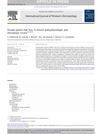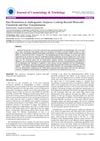5 months topical spiro + minox + micro Progress Pictures 1/17/2025
A 35-year-old male uses topical minoxidil, spironolactone, and microneedling for hair loss, with spironolactone prescribed based on a DNA test indicating poor response to finasteride and dutasteride. Despite concerns about the test's validity and spironolactone's side effects, he reports stable or improved hair condition and no low testosterone symptoms.
View this post in the Community →
Similar Community Posts Join
5 / 1000+ resultscommunity C’est terrible - at my wits end
A 29-year-old woman is experiencing gradual hair thinning since age 15, suspects Androgenic Alopecia, and has tried 5% minoxidil with little success. She has purchased various hair loss treatments including minoxidil, dutasteride, finasteride, and spironolactone, but is cautious about starting them due to potential interactions with her ADHD medication.
community My Theory Regarding a Cause and Cure for Androgenetic Alopecia
Hair loss theory suggests imbalance between Vitamin D Receptor (VDR) and Androgen Receptor (AR) activation. Proposed treatment includes upregulating VDR, downregulating AR, and improving mitochondrial health.
community Haunting study is making me considering cycling fin/dut
Concerns about the long-term effects of dutasteride and finasteride on fertility, with discussions on cycling these medications to mitigate risks. The conversation highlights skepticism about study methodologies and the importance of weighing treatment risks against potential fertility issues.
community Haircafe - TOPICAL minoxidil is an anti aging drug
Topical minoxidil may cause skin aging effects like wrinkles and dark circles, possibly due to its alcohol content, while oral finasteride is reported to make users look younger. Switching to oral minoxidil or using moisturizers might help reduce these skin issues.

community Compressed part of research of theory of androgenic/anabolitic balance. AGA h-responders analytic. Theory of physio-metabolitic method of anti AGA treatment
The treatment for androgenetic alopecia involves using finasteride and minoxidil with intense exercise and cold exposure to boost metabolism and reduce androgenic effects, potentially leading to hair regrowth. This approach may activate biological pathways for improved hair and overall health.
Related Research
6 / 1000+ results
research Managing Patterned Hair Loss – A Hair Raising Task!
Hair loss can be managed with treatments like minoxidil, finasteride, and others, but there are still gaps in effectiveness and off-label usage is increasing.
research Female Pattern Hair Loss: An Update
Female pattern hair loss has multiple causes and treatments, with new therapies showing promise.

research Minoxidil: A Comprehensive Review
Minoxidil effectively treats hair loss, especially androgenetic alopecia, but needs more research for better understanding.

research Female Pattern Hair Loss: A Clinical, Pathophysiologic, and Therapeutic Review
No cure for female pattern hair loss, but various effective treatments exist.

research A Scoping Review of Exosome Delivery Applications in Hair Loss
Exosome therapy could help hair growth but needs more research for safety and effectiveness.

research Hair Restoration in Androgenetic Alopecia: Looking Beyond Minoxidil, Finasteride, and Hair Transplantation
Alternative treatments show promise for hair growth beyond traditional methods.